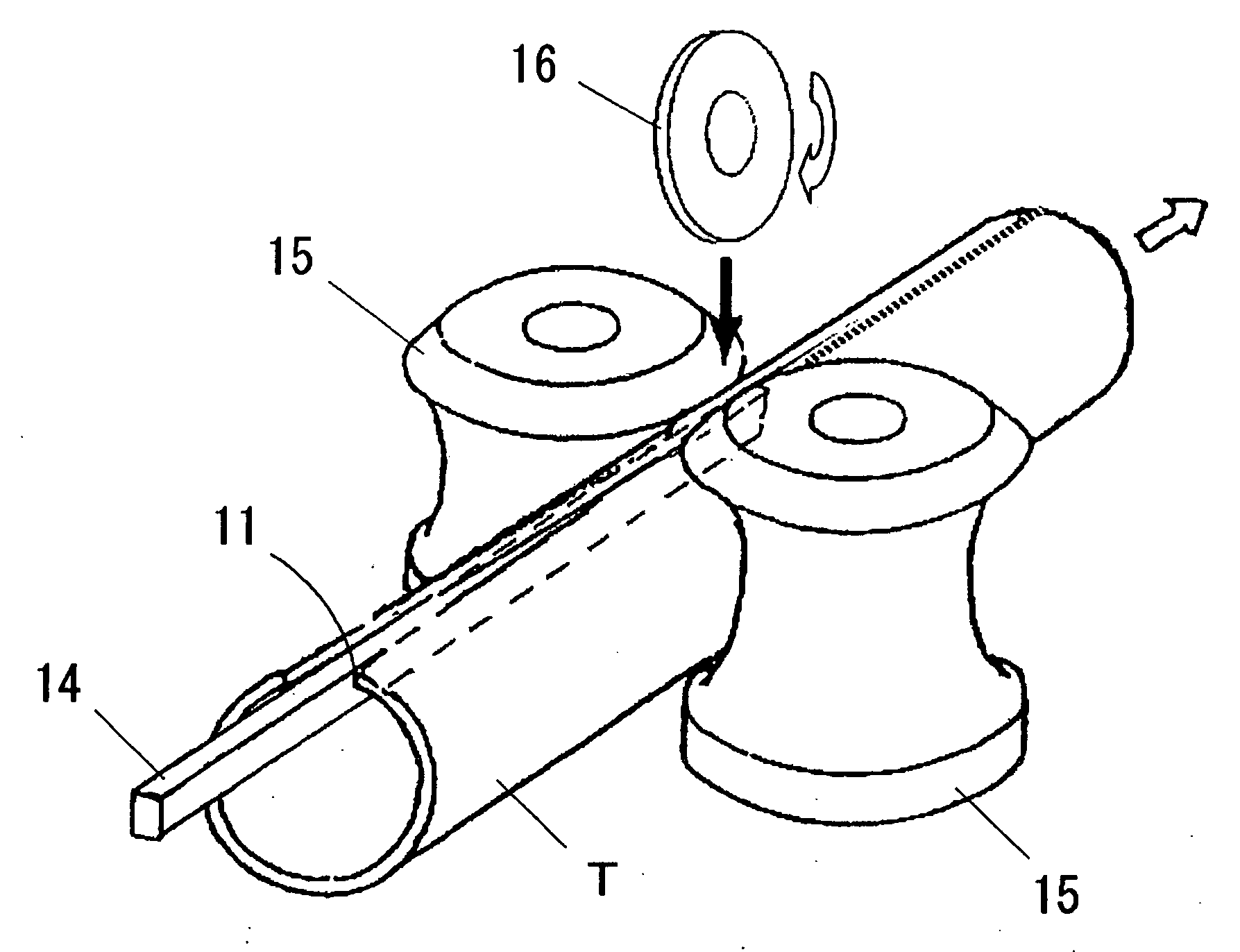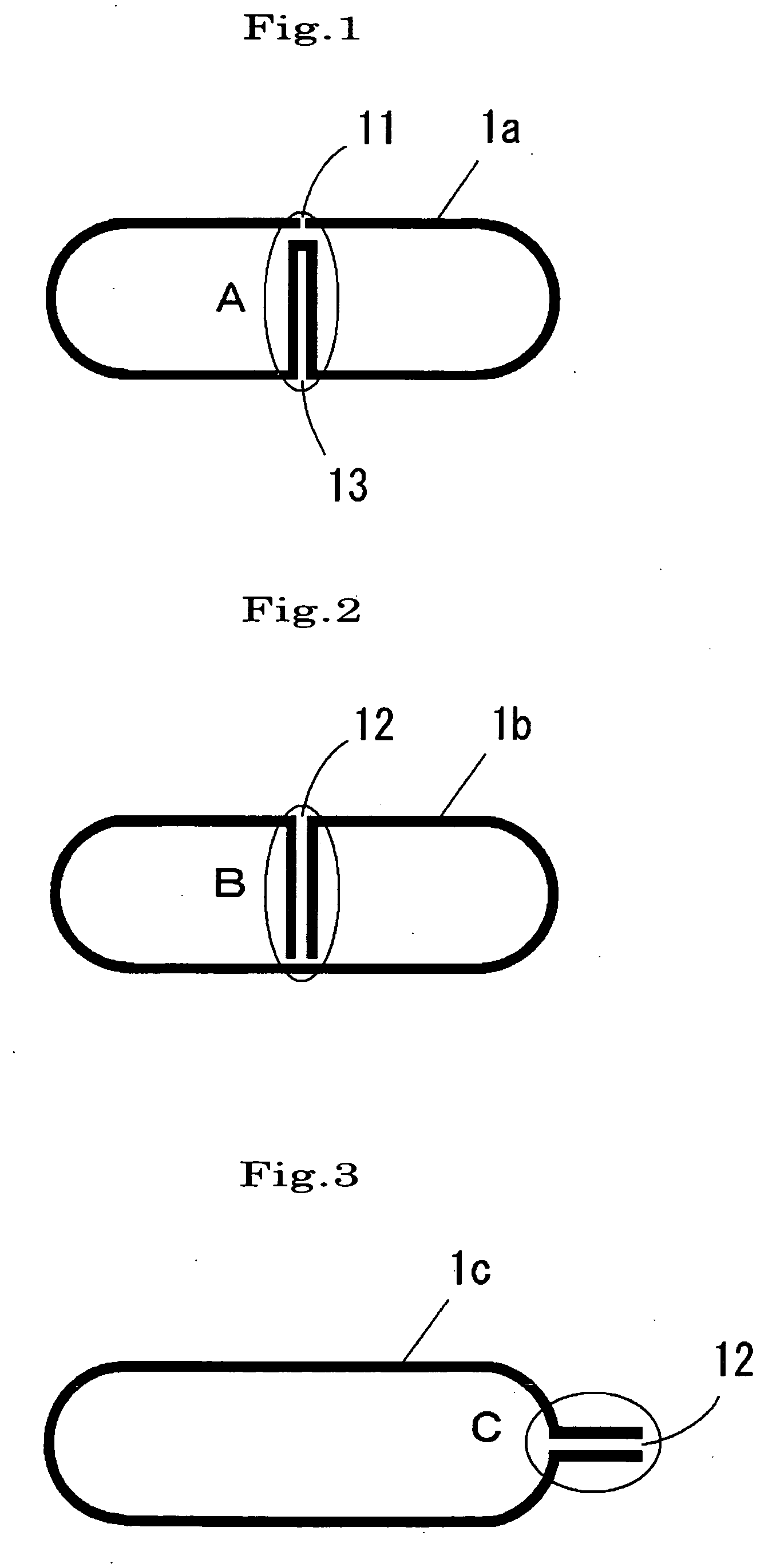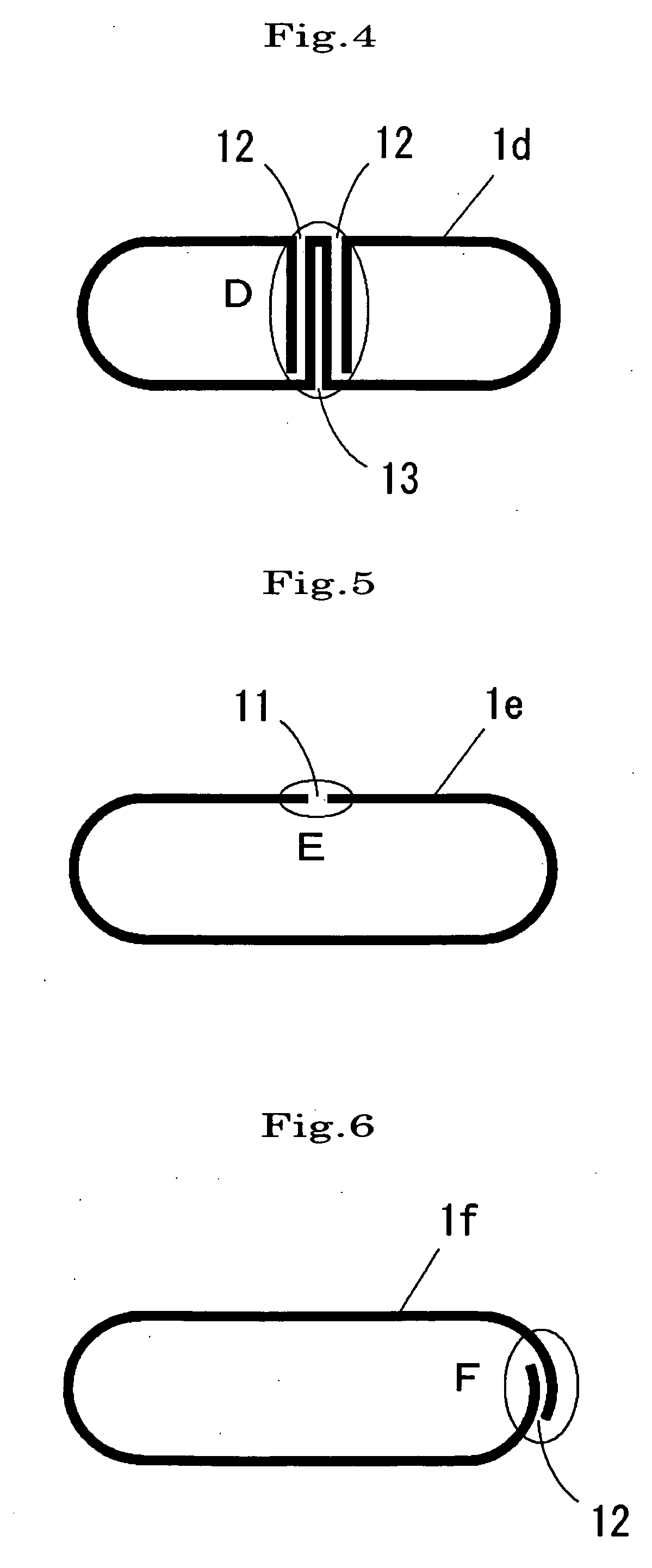Method of manufacturing heat exchanger tube and heat exchanger
- Summary
- Abstract
- Description
- Claims
- Application Information
AI Technical Summary
Benefits of technology
Problems solved by technology
Method used
Image
Examples
example 1
[0055]An Al—Mn aluminum alloy sheet (thickness: 0.2 mm) in which a sacrificial anode material Al—Zn alloy was clad on its outer surface was bent into a flat tube shape as shown in FIG. 3, and a parallel portion of the end portions was formed. An inner fin (thickness: 0.1 mm) formed of a corrugated Al—Mn aluminum alloy (Al—Si alloy filler metal was clad on both sides) was inserted into the flat tube. The end portion of the inner fin was placed between the aluminum alloy sheet portions forming the parallel portion to form an end portion in which the three portions were stacked.
[0056]The parallel portion and the end portion in which the three portions were stacked were restrained using steel plates with a thickness of 5 mm. A cylindrical steel rotating tool with a diameter of 0.5 mm was pressed against the side surfaces of the parallel portion and the end portion while rotating the tool at a rotational speed of 1500 rpm. The tool was moved in the longitudinal direction (width direction...
example 2
[0058]An Al—Mn aluminum alloy sheet (thickness: 0.2 mm) in which a sacrificial anode material Al—Zn alloy was clad on its outer surface was bent into a flat tube shape as shown in FIG. 5, and an opposing portion of the end portions was formed.
[0059]As shown in FIG. 19, the opposing portion was restrained using a steel backing jig and forming rollers. A disk-shaped steel roller with a diameter of 200 mm and a width of 0.5 mm was pressed against the opposing portion while rotating the roller at a rotational speed of 3000 rpm. The opposing portion was moved at a speed of 100 m / min to cause frictional heat generation to occur due to sliding, thereby welding the opening in the opposing portion.
[0060]The resulting tube was inserted into a header tube, and subjected to Nocolok brazing (brazing using fluoride flux) in which the tube was heated at a temperature of about 600° C. for three minutes. As a result, the filler metal did not enter the joint during brazing, and the amount of filler m...
PUM
| Property | Measurement | Unit |
|---|---|---|
| Shape | aaaaa | aaaaa |
Abstract
Description
Claims
Application Information
 Login to view more
Login to view more - R&D Engineer
- R&D Manager
- IP Professional
- Industry Leading Data Capabilities
- Powerful AI technology
- Patent DNA Extraction
Browse by: Latest US Patents, China's latest patents, Technical Efficacy Thesaurus, Application Domain, Technology Topic.
© 2024 PatSnap. All rights reserved.Legal|Privacy policy|Modern Slavery Act Transparency Statement|Sitemap



